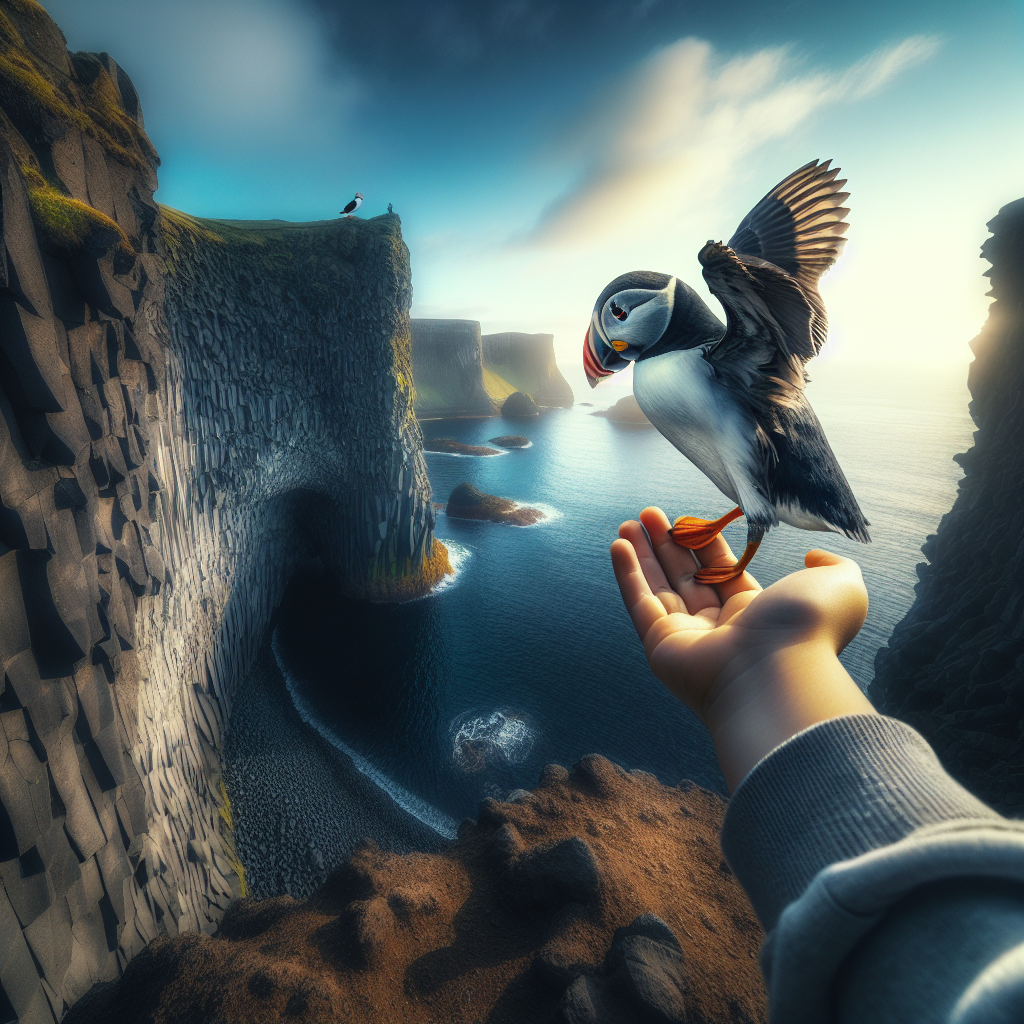Explore the captivating moments from the animal kingdom captured in breathtaking photographs this week.
Nature never ceases to amaze us with its beauty and unpredictability. Just last week, a young Icelander was seen releasing a puffling from a cliff in Vestmannaeyjar, an archipelago to the south of Iceland. This annual tradition, where thousands of pufflings are rescued by locals as they become misguided by city lights during their first flight, is a testament to the deep connection between humans and wildlife. Such moments, captured in stunning photographs, remind us of the importance of preserving these natural wonders.
Wildlife photography plays a crucial role in raising awareness about conservation and the unique behaviors of animals. Through the lens, we can witness the intricate social dynamics of monkeys, the heartwarming rescue of orphaned animals, and the fierce predatory strategies of cheetahs. This week, we delve into these remarkable wildlife moments from around the world, offering readers a glimpse into the wonders of nature and the importance of protecting these species.
Table of Contents
Monkeys and Their Vanity
Monkeys are often seen as playful and curious creatures, but their behavior goes beyond mere antics. This week, photographs captured monkeys engaging in what can only be described as ‘vain’ behavior. These primates were observed grooming each other meticulously, a social activity that strengthens bonds within the group. Such interactions highlight the complex social structures and psychological behaviors of monkeys.
Understanding these behaviors is crucial for animal psychology and conservation efforts. Studies have shown that grooming not only helps in maintaining hygiene but also plays a significant role in social bonding and stress reduction among monkeys. For more insights into animal psychology and social structures, you can explore this study.
The Puffling Release Tradition
In Iceland, the annual tradition of rescuing pufflings is a heartwarming event that showcases the bond between humans and wildlife. Pufflings, young puffins, often get disoriented by urban lights during their first flight and end up stranded in towns. Locals, especially children, gather these lost birds and release them back into the wild from cliffs.
This tradition is not just a cultural event but a crucial conservation effort. Urban development poses significant risks to pufflings, and this rescue operation helps mitigate those dangers. Conservationists have noted that such community-driven efforts are vital for the survival of these birds. For more on the challenges pufflings face and the importance of this tradition, visit Pufflings and Urban Lights.
Cheetah Predation in the Masai Mara
The Masai Mara in Kenya is a hotspot for witnessing the raw power of nature. This week, photographers captured a dramatic scene of four cheetahs surrounding and attacking a zebra. Cheetahs, known for their incredible speed, employ strategic hunting techniques to catch their prey. They often work in groups to increase their chances of a successful hunt.
Predator-prey interactions like these are essential for maintaining ecological balance. Cheetahs play a crucial role in controlling herbivore populations, which in turn affects vegetation and the overall health of the ecosystem. However, cheetah populations are declining due to habitat loss and human-wildlife conflict. For more information on cheetah conservation efforts, check out Cheetah Conservation Efforts.
Heartwarming Rescue Stories
One of the most touching stories this week is that of Smillo, an orphaned howler monkey cared for at a rescue center run by the International Animal Rescue. Smillo’s journey from being an orphan to finding a new family at the rescue center highlights the critical role these centers play in wildlife conservation.
Rescue centers not only provide immediate care for injured or orphaned animals but also work towards their rehabilitation and eventual release back into the wild. The emotional and ecological impacts of such interventions are profound, as they help preserve species and maintain biodiversity. To learn more about the work of rescue centers, visit International Animal Rescue Initiatives.
Snapshots of Nature’s Diversity
This week, we also witnessed a variety of wildlife moments that showcase the diversity of nature. From a baby raccoon yawning before bed at an International Animal Rescue center in Costa Rica to a sea turtle hatchling struggling to flip itself over on a beach in Adana, Turkey, each moment is a testament to the beauty and resilience of wildlife.
In the Tibetan plateau, wild donkeys, or kiang, were seen grazing, while in Ankara, Turkey, a black swan cooled off in Kuğulu park. Meanwhile, two brown hawker dragonflies dueled for control of a stretch of the Grand Canal in Athy, Co Kildare, Ireland. Each of these moments, captured in vivid detail, reminds us of the uniqueness of each species and the importance of conservation efforts. For further readings about these animals or conservation efforts, you can explore Exploring the Tibetan Plateau.
Intriguing Fact
Did you know that wildlife photography has been instrumental in many conservation efforts? By capturing the beauty and plight of endangered species, photographers can evoke emotions and drive action towards conservation. For more on the importance of wildlife photography, visit The Importance of Wildlife Photography.
Recap
This week’s wildlife moments highlight the interconnectedness of nature and the importance of protecting these species. From the social dynamics of monkeys to the heartwarming rescue of pufflings and orphaned animals, each story underscores the need for conservation efforts. By understanding and appreciating these moments, we can contribute to preserving the natural world for future generations.
Learn more:
- Pufflings and Urban Lights
- Cheetah Conservation Efforts
- International Animal Rescue Initiatives
- The Importance of Wildlife Photography
- Exploring the Tibetan Plateau
By engaging with these stories and supporting conservation efforts, we can ensure that the wonders of wildlife continue to inspire and captivate us for years to come.
